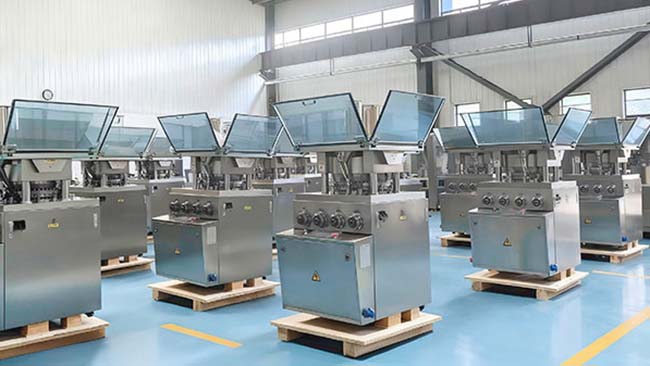Έχετε βρεθεί ποτέ σε ένα εργαστήριο ή εργοστάσιο παραγωγής και έχετε αντιμετωπίσει μια μεγάλη ποικιλία από πρέσες δισκίωνΕίναι εκπληκτικό το πώς ένα φαινομενικά απλό κομμάτι εξοπλισμού μπορεί να παράγει μια τόσο μεγάλη ποικιλία δισκίων. Από κοινές στρογγυλές δισκία μέχρι ειδικά διαμορφωμένα σχέδια, από μικροσκοπικές δόσεις ακριβείας μέχρι μεγάλα δισκία παρατεταμένης αποδέσμευσης, οι πρέσες δισκίων είναι ικανές για πολύ περισσότερα από όσα μπορείτε να φανταστείτε. Σήμερα, ας βγάλουμε το μυστήριο από τις πρέσες δισκίων και ας δούμε ακριβώς ποιες δυνατότητες μπορούν να προσφέρουν στα προϊόντα σας.
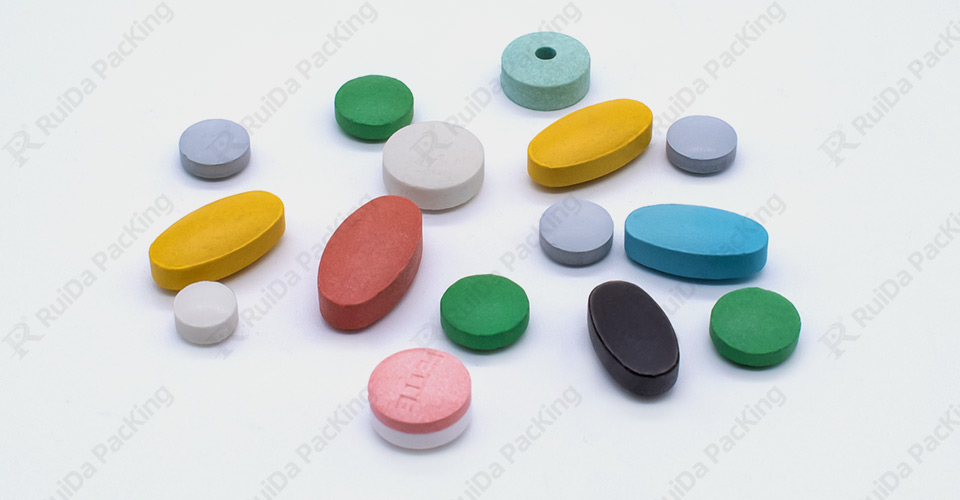
Ποιοι είναι οι κύριοι τύποι δισκίων που μπορεί να παράγει μια πρέσα δισκίων;
Οι πρέσες δισκίων μπορούν να παράγουν ένα ευρύ φάσμα τύπων δισκίων, αλλά οι απαιτήσεις απόδοσης του μηχανήματος ποικίλλουν σημαντικά από τον έναν τύπο δισκίου στον άλλο. Ανάλογα με τις απαιτήσεις παραγωγής, θα πρέπει να επιλέξετε ένα μηχάνημα που μπορεί να πληροί συγκεκριμένες προδιαγραφές δισκίων. Παρακάτω παρατίθενται μερικοί συνηθισμένοι τύποι δισκίων και οι αντίστοιχες τεχνικές απαιτήσεις:
Συνηθισμένα δισκία: είναι ο πιο συνηθισμένος τύπος δισκίων, όπως δισκία διαφορετικών μεγεθών και προϊόντα υγειονομικής περίθαλψης, τα οποία είναι πολύ ευέλικτα και κατάλληλα για μαζική παραγωγή. Για τις πρέσες δισκίων που παράγουν απλές δισκία, ο έλεγχος του βάρους, της σκληρότητας και της ταχύτητας αποσύνθεσης των δισκίων αποτελεί προτεραιότητα. Η παραγωγή τέτοιων δισκίων απαιτεί εξοπλισμό με καλή ακρίβεια και συνέπεια για να διασφαλίζεται η σταθερή ποιότητα από παρτίδα σε παρτίδα.
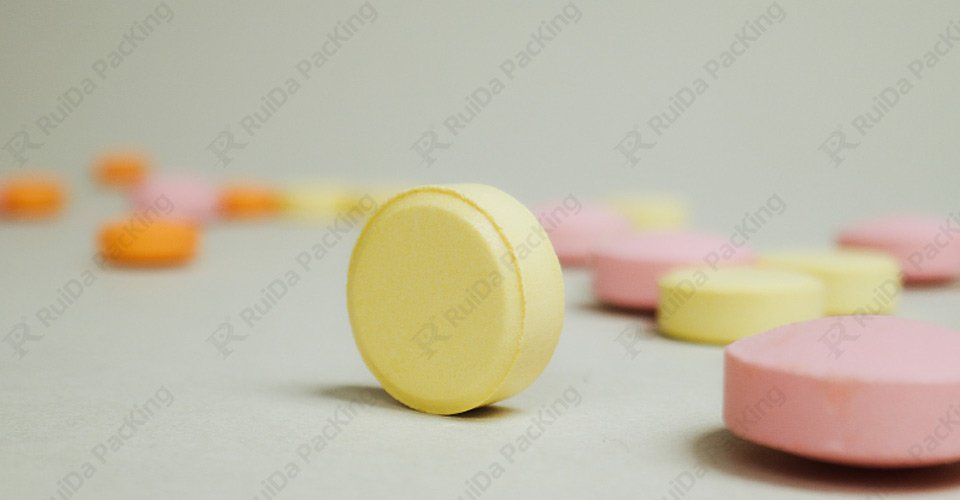
Αναβράζοντα δισκία: Πρέπει να διαλύονται γρήγορα στο νερό, επομένως η διάλυσή τους θέτει υψηλότερες απαιτήσεις στη διαδικασία συμπίεσης των δισκίων. Οι πρέσες δισκίων απαιτούν ακριβή έλεγχο της πίεσης για την αποφυγή δισκίων που είναι πολύ δύσκολα να διαλυθούν. Η παραγωγή αυτών των δισκίων συνήθως απαιτεί ειδικά σχεδιασμένα καλούπια για να διασφαλιστούν τα χαρακτηριστικά απελευθέρωσης του φαρμάκου.
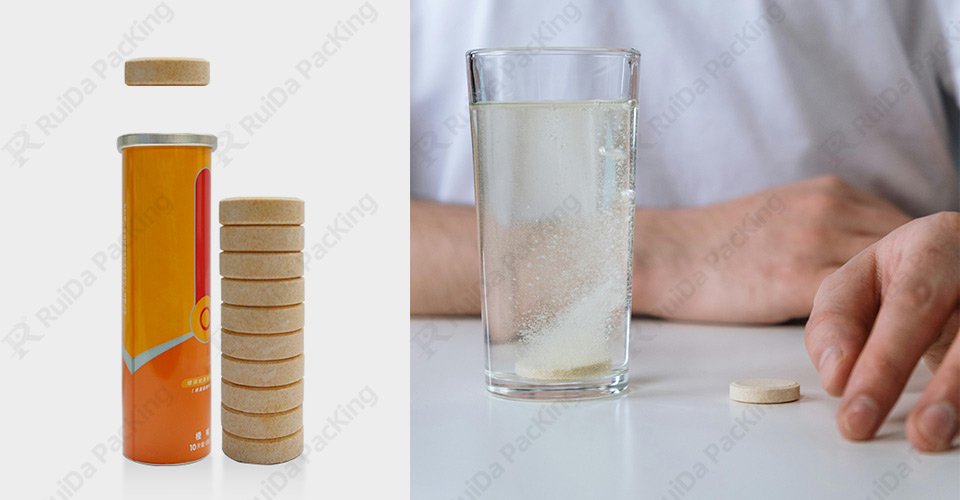
Δισκία ελεγχόμενης αποδέσμευσης: Πρόκειται για δισκία στα οποία το φάρμακο απελευθερώνεται αργά στο σώμα, ελέγχοντας αποτελεσματικά τη συγκέντρωση του φαρμάκου στο σώμα. Οι πρέσες δισκίων για την παραγωγή δισκίων ελεγχόμενης απελευθέρωσης πρέπει να είναι εξοπλισμένες με ακριβή ρύθμιση δύναμης συμπίεσης για να διασφαλίζεται η συνεπής απελευθέρωση του φαρμάκου. Ο εξοπλισμός πρέπει να είναι εξαιρετικά σταθερός και ικανός να διασφαλίζει ότι κάθε στρώμα του δισκίου δεν παραμορφώνεται ή αποκολλάται κατά τη διαδικασία συμπίεσης.
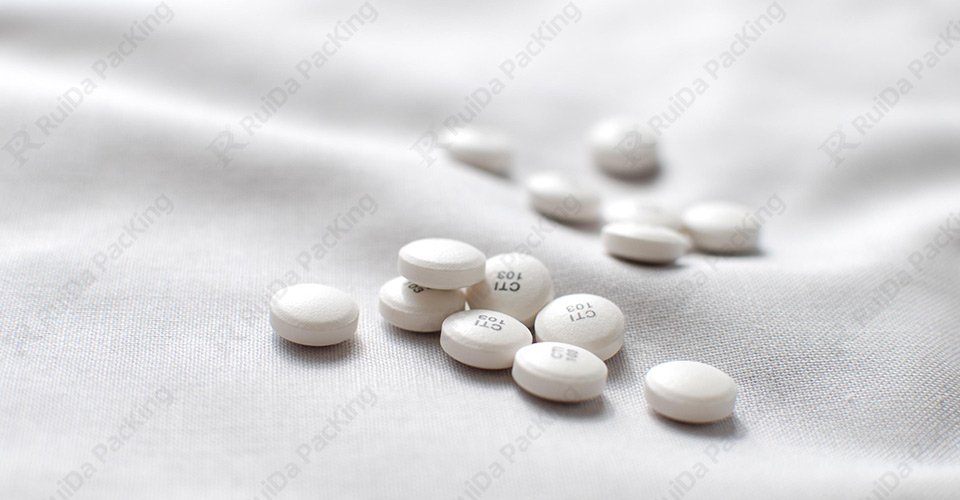
Δισκία πολλαπλών στρώσεων: αποτελούνται από δύο ή περισσότερα στρώματα υλικού, καθένα από τα οποία μπορεί να περιέχει διαφορετικά συστατικά του φαρμάκου. Πολυστρωματικές πρέσες δισκίων Στην παραγωγή πολυστρωματικών δισκίων, οι μηχανισμοί εκκένωσης είναι απαραίτητοι, καθώς μπορούν να ελέγχονται ξεχωριστά από την ποσότητα πλήρωσης διαφορετικών υλικών και το πάχος του δισκίου, έτσι ώστε κάθε στρώμα υλικού να είναι σφιχτά συνδυασμένο, για να αποφευχθεί η αποκόλληση ή η ασταθής αποτελεσματικότητα. Επιπλέον, η πρέσα δισκίων πρέπει να έχει τη δυνατότητα να ρυθμίζει γρήγορα τη δύναμη συμπίεσης και το καλούπι ώστε να προσαρμόζεται στα χαρακτηριστικά των διαφορετικών στρωμάτων υλικών.
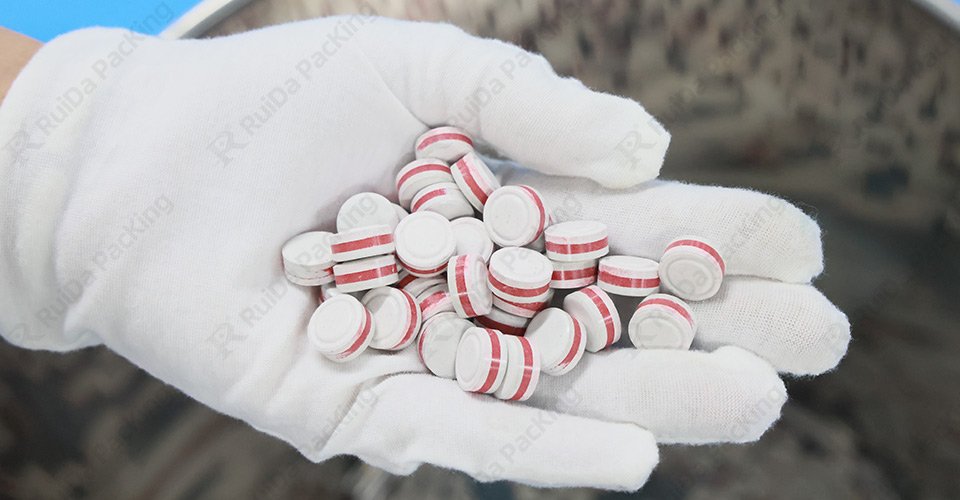
Μασώμενα δισκία: Χρησιμοποιείται συνήθως στην παραγωγή παιδικών φαρμάκων ή συμπληρωμάτων διατροφής, όπου η γεύση και η σκληρότητα είναι κρίσιμες. Οι πρέσες δισκίων πρέπει να επικεντρώνονται στην αντοχή στην αποσύνθεση και την ομοιομορφία των σωματιδίων σκόνης κατά την παραγωγή μασώμενων δισκίων. Η μηχανή πρέπει να είναι σε θέση να ρυθμίζει την πυκνότητα και τη σκληρότητα των δισκίων για να διασφαλίζει ότι το τελικό προϊόν είναι εύγευστο και μασώμενο.
Για να σας βοηθήσουμε να οπτικοποιήσετε τα χαρακτηριστικά των διαφόρων τύπων tablet, ας δούμε έναν απλό συγκριτικό πίνακα:
Τύπος tablet | Βασικά χαρακτηριστικά | Κατάλληλα σενάρια |
Συμβατικός | Στρογγυλή, επίπεδη, απλή δομή | Τα περισσότερα από του στόματος φάρμακα |
Σχηματισμένος | Μοναδική μορφή, εύκολα αναγνωρίσιμη | Επώνυμα φάρμακα, παιδιατρικά φάρμακα |
Πολυστρωματικό | Σύνθετη δομή, πολλαπλά εφέ | Συνδυασμένα φάρμακα, συνδυασμοί IR-ER |
Ελεγχόμενη απελευθέρωση | Δομή ελεγχόμενης αποδέσμευσης, μακράς δράσης | Φάρμακα για χρόνιες παθήσεις, μειωμένη συχνότητα δοσολογίας |
Μασώμενο | Εύκολο στη διάλυση, καλή γεύση | Παιδιατρικά φάρμακα, συμπληρώματα όπως το ασβέστιο |
Μικρο | Μικρός όγκος, ακριβής δοσολογία | Φάρμακα χαμηλής δόσης, ορμονικά φάρμακα |
Μεγάλο | Μεγάλος όγκος, υψηλή δόση | Βιταμίνες, συμπληρώματα μετάλλων |
Προσαρμοσμένο σχήμα | Μοναδική μορφή, υψηλή αναγνωρισιμότητα | Επώνυμα φάρμακα, ανάγκες μάρκετινγκ |
Ανάγλυφο | Αναγνωριστικά επιφάνειας, λειτουργία κατά της παραποίησης/απομίμησης | Συνταγογραφούμενα φάρμακα, ανάγκες προστασίας επωνυμίας |
Βαθμολογήθηκε | Εύκολος διαχωρισμός, ευέλικτη δοσολογία | Φάρμακα που απαιτούν προσαρμογές δόσης |
Επηρεάζει η διαφορά στο σχήμα και το μέγεθος των δισκίων την παραγωγή;
Το σχήμα και το μέγεθος των δισκίων μπορούν να επηρεάσουν άμεσα την πολυπλοκότητα της παραγωγής, τον σχεδιασμό των εργαλείων της μηχανής και την αποτελεσματικότητα της παραγωγής. Μπορεί να χρειαστεί να παράγετε δισκία διαφορετικών σχημάτων και μεγεθών και το εάν η πρέσα δισκίων προσαρμόζεται σε αυτές τις ανάγκες καθορίζει άμεσα την ευελιξία της παραγωγής και τον έλεγχο του κόστους.
Σχήματα δισκίων
Στρογγυλά δισκία: είναι το πιο χρησιμοποιούμενο σχήμα στη σημερινή φαρμακευτική παραγωγή, καθώς άλλα στρογγυλά τυποποιημένα σχήματα είναι κατάλληλα για μαζική παραγωγή του ίδιου μεγέθους. Τα πλεονεκτήματά τους είναι ότι είναι εύκολο να ελεγχθεί το βάρος και η σκληρότητα και είναι κατάλληλα για αυτοματοποιημένο εξοπλισμό συσκευασίας. Ωστόσο, το μειονέκτημα των στρογγυλών δισκίων είναι ότι ενδέχεται να μην διαφοροποιούνται οπτικά για ορισμένες μάρκες φαρμάκων.
Οβάλ δισκία: χρησιμοποιούνται συνήθως για φάρμακα που είναι δύσκολο να καταποθούν. Αυτό το σχήμα αυξάνει την άνεση κατά τη λήψη και συμβάλλει στη διαφοροποίηση και την αναγνώριση του προϊόντος, αλλά απαιτεί πιο απαιτητικό σχεδιασμό καλουπιού λόγω του σχήματός του. Επίσης, ο εξοπλισμός ενδέχεται να απαιτεί πιο συχνές ρυθμίσεις για να διασφαλιστεί η σταθερή ποιότητα των δισκίων.
Σχήματα δισκία: Σχήματα όπως καρδιές, τρίγωνα ή σχήματα λογότυπων επωνυμίας χρησιμοποιούνται συχνά για συγκεκριμένες μάρκες φαρμακευτικών προϊόντων ή συμπληρωμάτων. Αυτά τα δισκία προσφέρουν υψηλή αναγνωρισιμότητα επωνυμίας, αλλά η διαδικασία παραγωγής είναι περίπλοκη, ο εξοπλισμός έχει συχνές αλλαγές καλουπιού και το κόστος συντήρησης είναι σχετικά υψηλό.
Μέγεθος και διάμετρος δισκίου
Το μέγεθος και η διάμετρος των δισκίων είναι επίσης κρίσιμα στην παραγωγή. Μικρότερα δισκία μπορούν να παραχθούν με μεγαλύτερες ταχύτητες παραγωγής, αλλά τα δισκία μεγαλύτερης διαμέτρου μπορούν να οδηγήσουν σε αυξημένα φορτία εξοπλισμού λόγω των μεγαλύτερων δυνάμεων συμπίεσης που απαιτούνται.
Τύπος tablet | Εύρος διαμέτρου | Δυσκολία συμπίεσης | Ταχύτητα παραγωγής |
Μικρά δισκία | 3-5 χιλιοστά | Εύκολος | Γρήγορα |
Μεσαία δισκία | 6-10 χιλιοστά | Μέτριος | Μέσον |
Μεγάλα δισκία | 11-20 χιλιοστά | Προκλητικό | Αργός |
Τα δισκία μεγάλης διαμέτρου είναι επιρρεπή σε θραύση ή αποσύνθεση κατά την παραγωγή και οι πρέσες δισκίων απαιτούν υψηλότερες δυνάμεις συμπίεσης και αντοχή στη φθορά. Επιπλέον, τα μεγαλύτερα δισκία απαιτούν υψηλότερο επίπεδο σχεδιασμού καλουπιού και διάτρησης, καθώς και ευελιξία στη ρύθμιση του εξοπλισμού και ανθεκτικότητα.
Πώς επιλέγετε μια πρέσα tablet που ταιριάζει στις ανάγκες σας;
Καταρχάς, πρέπει να λάβετε υπόψη τις απαιτήσεις χωρητικότητας. Μια μικρή πρέσα δισκίων Έρευνας και Ανάπτυξης μπορεί να είναι σε θέση να παράγει μόνο μερικές εκατοντάδες δισκία ανά ώρα, ενώ μια μεγάλη μηχανή βιομηχανικής ποιότητας μπορεί να είναι σε θέση να παράγει εκατοντάδες χιλιάδες δισκία ανά ώρα. Η κλίμακα παραγωγής σας καθορίζει ποια κατηγορία εξοπλισμού θα πρέπει να επιλέξετε.
Στη συνέχεια, πρέπει να σταθμίσετε την ισορροπία μεταξύ ευελιξίας και εξειδίκευσης. Μια ευέλικτη πρέσα δισκίων μπορεί να καλύψει τις ανάγκες παραγωγής πολλών τύπων δισκίων, αλλά μπορεί να μην είναι τόσο καλή όσο μια εξειδικευμένη μηχανή για ορισμένους συγκεκριμένους τύπους παραγωγής. Πρέπει να κάνετε μια επιλογή με βάση το επιχειρηματικό σας μοντέλο.
Οι τεχνικές παράμετροι είναι το κύριο μέλημα στο οποίο πρέπει να δώσετε προσοχή. Το εύρος πίεσης, ο έλεγχος ταχύτητας, οι απαιτήσεις ακρίβειας, όλα αυτά έχουν άμεσο αντίκτυπο στην ποιότητα του προϊόντος σας. Μην ξεγελιέστε από φανταχτερές λέξεις-κλειδιά και συγκρίνετε προσεκτικά αυτές τις βασικές παραμέτρους.
Η σχέση κόστους-αποτελεσματικότητας είναι επίσης ένας παράγοντας που πρέπει να σταθμίσετε. Να θυμάστε ότι το πιο ακριβό δεν είναι απαραίτητα το καλύτερο για εσάς. Πρέπει να βρείτε την πιο οικονομική επιλογή με βάση τον προϋπολογισμό και τις ανάγκες σας.
Κοιτώντας μπροστά, η τεχνολογία της πρέσας δισκίων εξακολουθεί να εξελίσσεται. Η εξατομικευμένη παραγωγή γίνεται τάση και το μοντέλο παραγωγής χαμηλού όγκου και πολλαπλών ποικιλιών θα μπορούσε να αλλάξει ολόκληρο το τοπίο του κλάδου. Είστε έτοιμοι για αυτήν την αλλαγή;
Ο ψηφιακός μετασχηματισμός επηρεάζει επίσης την ανάπτυξη των πιεστηρίων tablet. Η εφαρμογή της τεχνολογίας IoT μπορεί να βελτιώσει σημαντικά την αποδοτικότητα της παραγωγής σας, την παρακολούθηση σε πραγματικό χρόνο και τον ακριβή έλεγχο. Αυτό μπορεί να απαιτήσει να δώσετε μεγαλύτερη προσοχή κατά την αγορά εξοπλισμού.
Η εφαρμογή νέων υλικών, από την άλλη πλευρά, μπορεί να φέρει μια επανάσταση στην παραγωγή δισκίων. Η χρήση βιοδιασπώμενων υλικών και νέων εκδόχων μπορεί να αλλάξει τα χαρακτηριστικά των προϊόντων σας. Η επιλογή μιας πρέσας δισκίων που μπορεί να φιλοξενήσει αυτά τα νέα υλικά μπορεί να σας δώσει ένα προβάδισμα έναντι του ανταγωνισμού στο μέλλον.
Ο κόσμος των πρέσες δισκίων είναι πολύ πιο πλούσιος από ό,τι νομίζετε. Από απλές στρογγυλές ταμπλέτες έως σύνθετες πολυστρωματικές ταμπλέτες βραδείας αποδέσμευσης, από μικροσκοπικές δόσεις ακριβείας έως μοναδικά σχήματα, οι σύγχρονες πρέσες δισκίων μπορούν να καλύψουν σχεδόν όλες τις ανάγκες σας. Η επιλογή της σωστής πρέσας δισκίων όχι μόνο θα αυξήσει την παραγωγικότητά σας, αλλά θα δώσει και στο προϊόν σας νέες δυνατότητες. Να θυμάστε ότι η κατανόηση των δυνατοτήτων μιας πρέσας δισκίων είναι το ίδιο με το να κρατάτε το κλειδί για την καινοτομία προϊόντων.

